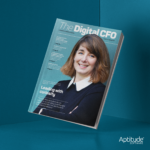Experts from KPMG, ING, and Aptitude share what they’ve seen across their careers.
Previously published in The Digital CFO Magazine
Recently we gathered together a roundtable of finance transformation experts to discuss all things digital finance. The conversation ranged from technology cycles (hint, we’re in the renewal phase), to how to dispel common myths around finance change, to why it’s important to “follow the energy of the problems” rather than forcing change. A particularly interesting discussion involved the most common digital finance transformation mistakes the participants have seen over the lengthy course of their careers. Do any of these sound familiar?
Failing to take a holistic approach
For Rangit Chima, Executive Director – Business Transformation at KPMG Canada, when organizations fail to look across the entire finance landscape when approaching a finance change program, they can be left with solutions which are suitable for certain areas but leave gaping holes. “This is a classic mistake,” stated Chima. “Starting with Y2K, people started putting in ledgers. And in the absence of subledgers and the absence of EPM tools, you know, they bloated their ledgers out to be able to do everything. And the answer was no.” Chima’s advice was to address each problem with a solution designed to address that issue. “Let the ledger do what the ledger is good at. Pick an EPM tool to do what EPM is good at. Let the subledger to do what a subledger is good at…don’t try and make one tool do everything.”
Failing to connect delivered capabilities with actual benefits
Chima also articulated the risk of declaring a program finished at the end of implementation without understanding how to realize the benefits of the new solution. “It’s basically saying, I’ve put in a tool and then the business turns around and says, well, so what? When the program team has not gone the extra mile to understand how to realize the benefits of the solution we see smooth transitions to the new technology and then 18 months of hell as the business figures out how to use it effectively.” Chima notes that this lack of connecting capabilities to the broader vision and benefits leads to the need to ramp up additional (and expensive) staff to compensate for the lack of foresight. And the way to avoid this painful misstep? Chima suggests adhering to the agile definition of minimum viable product where at multiple points along the implementation process, the product features are evaluated by users to make sure clear benefits are delivered and learnings and feedback are taken into account.
Making the big bet
Peter Penning, IT Lead at ING, spoke about one of the most common finance transformation mistakes he’s seen in his career which he calls making the big bet. “This is essentially saying that against so many millions in so many years, I will change the world completely.” Penning acknowledges that this approach is appealing as it can generate the energy that comes with a ‘change the world’ mentality but ultimately you risk setting yourself up for failure. “If you put that kind of option on the table at the beginning, first of all, CFOs being CFOs, they will say, oh, that’s too much and too long. I can only give you a half. So, you’re already starting out negotiating about something that that you can’t even properly estimate to with a certain level of granularity.”
He advises charting a path where you can make changes almost every day or at least every sprint to continually move toward the overall vision. At ING, they used a particularly painful problem in one area of the business – two countries that needed to support more granular accounting – to iteratively implement a solution, ensuring a strong business case and delivered value. From there, Penning describes how that became the first steppingstone in a strategic approach that could be rolled out across the broader global business. “If other functions or other locations need to solve this problem, this is the solution. And then we follow the energy that comes with solving problems. And that is what makes it doable. And it also makes sure that with every step you deliver value.”
https://aptitudesoftware.wistia.com/medias/gnsrmnbmnk
Peter Penning, ING on what to think about when selecting technology for a finance transformation
Failing to establish the foundations
Prior to his current role as Aptitude’s Head of CFO Business Architecture, Nick Shah worked in a variety of finance transformation roles at HSBC. During the roundtable, he noted the importance of getting the basics and the foundations right. “I think transformation for any organization, any function, should be exciting. It should be invigorating, and it should be quite dynamic. But it becomes very easy to focus on the latest technology available or the latest gizmo, the latest widget,” Shah acknowledges. However, he continued that if you haven’t got your foundations as a finance function in place, it becomes very difficult to enable that latest technology. “I just always come back to making sure you’re focused on your data architecture, your data sourcing, your ledgers, your subledgers, and making sure everything else can flow off the back of it. I think if you don’t get those basics rights in the first place, any financial transformation that then tries to progress without those foundations will be on a path to nowhere.”
Consensus on building blocks for success
All agreed on a few core building blocks for success. First, the organization has to be clear on the problems they are trying to solve. These discussions have to involve the broader business in addition to stakeholders throughout the finance department. Second, begin with a strong understanding of your data environment and data strategy to prevent issues later in the project. And finally, taking small steps and proving out what is working and what is not can build consensus and momentum for your finance transformation.
You can access the complete roundtable discussion on-demand here.



